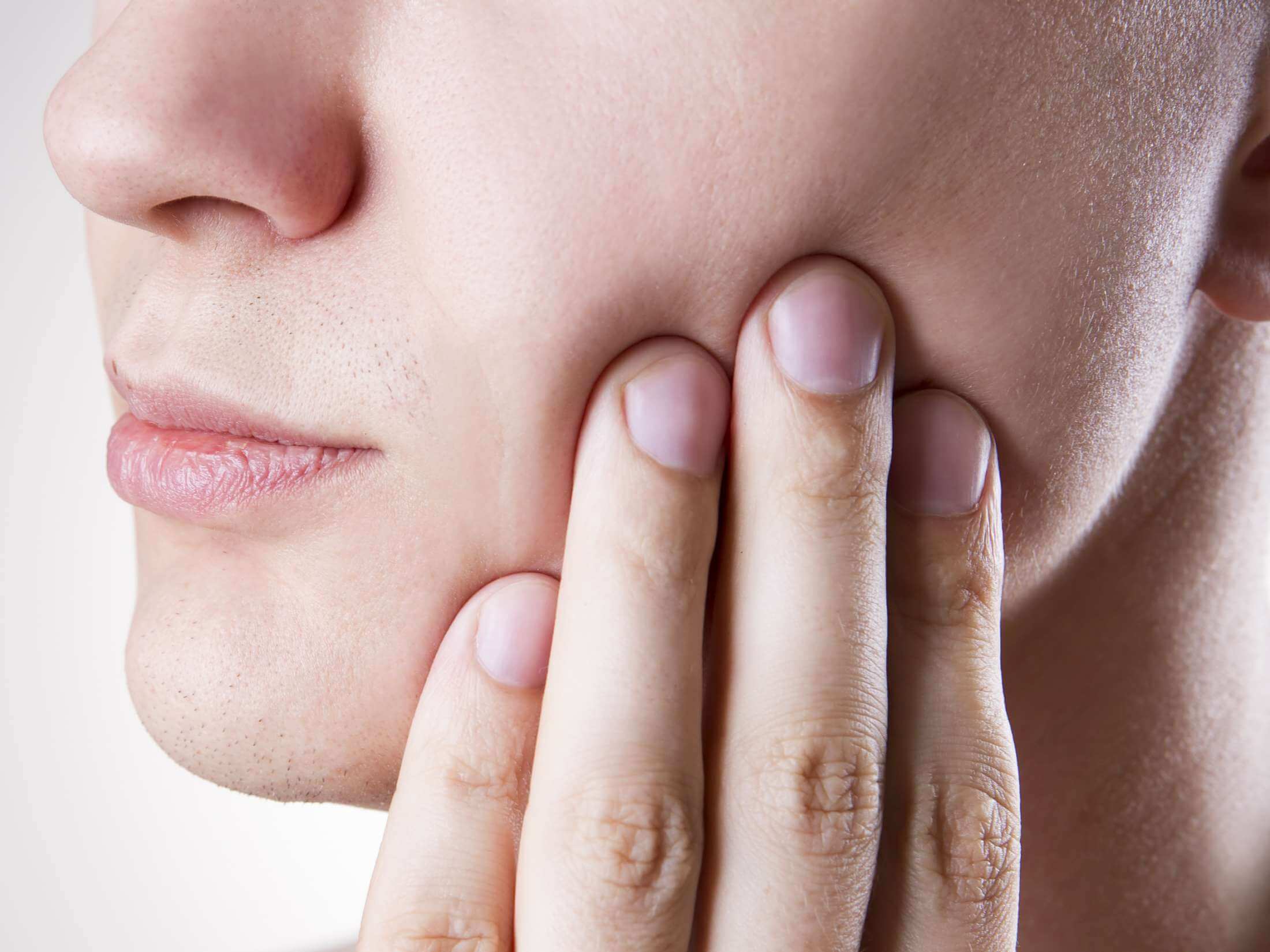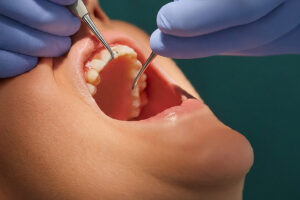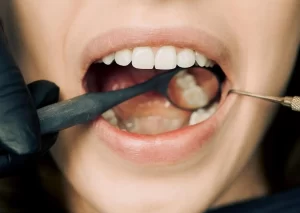Pericoronitis Treatment at Home

Pericoronitis, a dental condition characterized by the inflammation of the gum tissue surrounding a partially erupted tooth, often leads to discomfort and, if left untreated, can result in more serious complications.
Typically affecting wisdom teeth, this condition can cause pain, swelling, and in some cases, infection.
While severe instances may require professional dental care, there are effective treatments that can be administered at home to alleviate symptoms and promote healing.
This article delves into the realm of home remedies for pericoronitis, offering expert-recommended strategies to manage the condition safely and effectively.
Table of Contents
How can I soothe my symptoms with pericoronitis treatment at home?
Treating pericoronitis at home primarily involves alleviating pain, reducing inflammation, and preventing infection.
Here are several effective home remedies and practices to help soothe your symptoms:
- Good Oral Hygiene: Regular brushing and flossing can help remove food particles and bacteria that contribute to pericoronitis. Use a soft-bristled toothbrush to gently clean the affected area.
- Warm Salt Water Rinses: Dissolve a teaspoon of salt in a cup of warm water and gently rinse your mouth with the solution several times a day. This can help reduce swelling and kill bacteria around the affected area.
- Cold Compress: Applying a cold compress or ice pack to the outside of your cheek can help reduce swelling and relieve pain. Do this for 15-20 minutes every hour.
- Clove Oil: Clove oil has natural antiseptic properties and can help numb pain. Apply a small amount of clove oil directly to the inflamed gum or on a cotton ball that you can place against the area.
- Hydrogen Peroxide Rinse: Rinsing with a mixture of hydrogen peroxide and water can help reduce inflammation and kill bacteria. Use a solution of 1 part 3% hydrogen peroxide to 2 parts water, and swish it around the affected area, then spit it out.
- Over-the-Counter Pain Relievers: Nonsteroidal anti-inflammatory drugs (NSAIDs) like ibuprofen or acetaminophen can help relieve pain and reduce inflammation. Be sure to follow the recommended dosage instructions.
- Maintain Hydration: Drinking plenty of water can help flush out bacteria from the mouth and keep the tissues hydrated, which is essential for healing.
- Avoid Irritants: Try to avoid smoking and consuming hot, spicy, or hard foods that might irritate the affected area further.
If your symptoms persist or worsen, seek professional dental advice.
Pericoronitis can sometimes lead to more severe infections requiring antibiotics or dental procedures like wisdom tooth extraction or operculum removal.
In short, what are the Symptoms of Pericoronitis?
Pericoronitis symptoms can vary from mild to severe and typically include:
- Pain and tenderness in the gum area around the affected tooth
- Swelling and redness of the gums
- Difficulty opening the mouth (trismus)
- Bad taste in the mouth, often due to pus drainage from the infected area
- Bad breath (halitosis)
- Swelling of the lymph nodes under the chin or in the neck
- Fever, indicating a more severe infection
These symptoms arise due to the inflammation and infection of the gum tissue surrounding a partially erupted tooth, often a wisdom tooth.
What are the Causes of Pericoronitis
Pericoronitis occurs when the gum tissue around the crown of a partially erupted tooth, usually a wisdom tooth, becomes inflamed. This inflammation and subsequent infection can be attributed to several causes:
- Partial Tooth Eruption: A tooth that has not fully emerged leaves a flap of gum tissue, called an operculum, which can trap food particles and bacteria, leading to infection (read more: Gum Flap Over Wisdom Tooth)
- Poor Oral Hygiene: Inadequate brushing and flossing can allow bacteria to thrive around the partially erupted tooth, exacerbating the risk of inflammation and infection. Read more: How To Clean Under Gum Flap Wisdom Tooth
- Physical Irritation: The operculum can become irritated by the opposing tooth during chewing, leading to inflammation.
- Trauma: Any injury to the gum area, possibly from aggressive brushing or a sharp piece of food, can initiate the condition.
In essence, pericoronitis stems from the combination of trapped bacteria under the gum flap and physical irritation, compounded by challenges in maintaining cleanliness in hard-to-reach areas of the mouth.
Treatment for Pericoronitis
Treatment for pericoronitis varies depending on the severity of the condition. Here’s an overview of the typical approaches:
Mild to Moderate Pericoronitis
- Oral Hygiene Improvement: Regular, thorough brushing and flossing to remove food particles and bacteria from the affected area.
- Warm Salt Water Rinses: Gargling with warm salt water several times a day can help reduce swelling and fight infection.
- Pain Management: Over-the-counter pain relievers such as ibuprofen (Advil) or acetaminophen (Tylenol) can be used to alleviate pain and reduce inflammation.
Severe Pericoronitis
For more severe cases, especially those involving an infection that has spread, treatment may include:
- Antibiotics: To fight the infection, especially if there’s swelling extending beyond the affected area or if there’s a fever.
- Professional Cleaning: A dentist or oral surgeon may need to clean the area thoroughly to remove any debris and bacteria trapped under the gum flap.
- Operculum Removal: If the pericoronitis recurs, removing the flap of gum covering the tooth (operculum) may be necessary to prevent further issues.
- Tooth Extraction: In cases where other treatments don’t resolve the issue or if the wisdom tooth is causing persistent problems, extraction of the affected tooth may be the best course of action.
Prevention and Maintenance
After treatment, maintaining good oral hygiene helps prevent the recurrence of pericoronitis. Regular dental check-ups can also help monitor the health of wisdom teeth and the surrounding gum tissue.
Start treatment early to prevent the spread of infection.
Can Pericoronitis Be Cured At Home?
Pericoronitis can be managed at home if it’s mild, with the aim to alleviate symptoms and prevent infection.
Truly curing pericoronitis, especially if it’s caused by an underlying issue like an impacted tooth, often requires professional dental treatment.
Home remedies are effective for symptom relief and may include:
- Practicing good oral hygiene to remove food debris and bacteria.
- Rinsing with warm salt water to reduce inflammation and bacterial load.
- Applying cold compresses to decrease swelling.
- Using over-the-counter pain relief to manage discomfort.
These measures can help manage the symptoms and may prevent the condition from worsening.
If pericoronitis is recurrent or severe, involving significant pain, swelling, or signs of spreading infection, seek dental care.
While home remedies can be beneficial for temporary relief, they are not a definitive cure for pericoronitis, and professional evaluation is needed for a long-term solution.
FAQ on Pericoronitis Treatment at Home
What is the fastest way to cure pericoronitis?
The fastest way to cure pericoronitis involves promptly consulting a dentist for professional treatment, which may include cleaning the affected area, prescribing antibiotics to clear any infection, and possibly removing the overlying gum flap (operculectomy) or the affected tooth if necessary. These steps directly address the root causes and symptoms of pericoronitis, offering a quicker resolution than home remedies alone.
Will salt water get rid of pericoronitis?
Salt water rinses can help manage pericoronitis symptoms by reducing inflammation and bacteria, offering temporary relief. However, salt water alone is unlikely to fully get rid of pericoronitis, especially if the condition is severe or caused by an underlying issue. Professional dental treatment is often required for complete resolution.
Should I brush over pericoronitis?
Yes, you should gently brush the area affected by pericoronitis with a soft-bristled toothbrush to maintain oral hygiene and remove debris and bacteria. However, be very gentle to avoid further irritating the inflamed gum tissue. Good oral hygiene can help manage symptoms and prevent the condition from worsening.
How do you clean pericoronitis?
To clean an area affected by pericoronitis, follow these steps: Gently brush around the affected tooth and gum to remove food particles and plaque without causing additional irritation. Rinse your mouth with warm salt water (1 teaspoon of salt in a cup of warm water) several times a day to help reduce inflammation and bacteria.You can also use a diluted hydrogen peroxide rinse (mix equal parts of 3% hydrogen peroxide with water) to help kill bacteria. Use it sparingly, as overuse can disrupt the natural oral flora.
Can pericoronitis burst?
Yes, pericoronitis can lead to the formation of an abscess that may burst, releasing pus. This can temporarily relieve pressure and pain but also risks spreading the infection. See your dentist for the right dental treatment if an abscess forms or if there’s any indication of infection to prevent complications and properly address the underlying issue.
What makes pericoronitis worse?
Pericoronitis can worsen due to poor oral hygiene, which allows plaque and bacteria to accumulate under the gum flap, trapping food particles. Physical irritation from biting or chewing and the growth of the wisdom tooth can exacerbate the condition. Stress and a weakened immune system may also contribute to its worsening.
Are home remedies useful for pericoronitis?
Yes, home remedies can be useful for managing mild cases of pericoronitis by alleviating symptoms such as pain and swelling. These include practicing good oral hygiene, rinsing with warm salt water, applying cold compresses, and using over-the-counter pain relievers. For severe or recurrent cases, professional dental treatment is necessary to address the root cause of the condition.
Fact Checked
Our dedicated team rigorously evaluates every article and guide to ensure the information is factual, up-to-date, and free of bias.
Updated Regularly
We update our articles and reviews regularly to ensure you have access to the latest data in the dental industry.
The content on Dental3DU’s blog is intended for educational purposes only. This information should not be relied upon as professional medical counsel. Be sure to always consult with your dentist about the dangers and benefits of any medication, treatment or procedure.







